MedievalReporter.com
Covering history's most marvelous millennium
Join our newsletter!

Covering history's most marvelous millennium
Covering history's most marvelous millennium
The Caliphate, in theory, was the one and only Islamic empire that encompassed all muslim lands. The idea was that Muhammad’s official successor, the caliph, ruled supreme over the community of all muslims - the ummah. As such, he was a religious leader with “imperial ” authority over a multi-ethnic collection of territories. During the Golden Age of Islam, the caliph ruled from Pakistan to Portugal. Over time though, the caliphate’s prestige waned and the theory of “one nation under Allah” ran increasingly hollow.
History witnessed four major caliphates, disregarding the contemporary extremist and terrorist interpretation by IS(IS). Three of them were medieval: the Rashidun, Umayyad and Abbasid Caliphates. Their military, scientific and cultural achievements made them the center of the world.
This is a short intro from our Medieval Guidebook. Dive deeper into the subject by reading our articles about it.
The first of the four caliphates was the Rashidun Caliphate. It arose in 632 CE, directly following the death of Islam’s great prophet Muhammad. His father-in-law, Abu Bakr, became the first caliph. He and his Rashidun successors were elected by a council, although the will of their predecessors weighed heavily on those deliberations. After Abu, the first caliphate knew three more caliphs: Umar, Uthman and Ali.
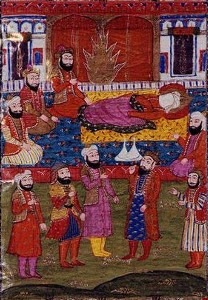
The Rashidun Caliphate only lasted for thirty years but it accomplished great achievements. Fortunately for the muslims, the Byzantines and Persians had just exhausted one another in a war that lasted for over 25 years. On top of that, favorable climate conditions in Arabia had bolstered the regional economy - and manpower. As a result, the Arabs quickly overran the Levant and current-day Egypt, Lybia, Iraq, Iran, Armenia, and Azerbaijan. The Rashidun army eventually numbered over 100,000 men - its ranks bolstered with new recruits from all these regions.
Within three decades of Muhammad’s death, Islam had swallowed the Persian Empire whole and amputated the Byzantine Empire. Not all was well on the muslim front, though. Caliph Uthman was assassinated. The Islamic world split into two factions upon his death. One was led by caliph Ali, the other by his rival Muawiyah. The four-year reign of Ali was basically a civil war, called the First Fitna by muslims.
Tragically, Ali was assassinated too. While praying in a mosque, he was wounded with a poisoned sword. The venom did the rest. Muawiyah then went on the offensive against Ali’s son, Hassan (sometimes recognized as the fifth caliph). Within a year, Hassan was forced to yield and abdicated in favor of his rival, ending the Fitna.
The Rashiduns were finished. Muawiyah became the first Umayyad caliph.
The Umayyads changed the caliphate in so many ways that some consider it to be a sultanate. A sultan is a secular ruler, whereas the Rashiduns had emphasized their religious leadership. But the Umayyads were no direct family of Muhammad. So they sought new ways of legitimizing their regime. They transformed the Islamic realm into a centralized monarchy.
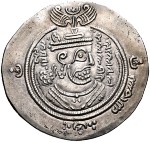
The Umayyad caliphs had few other choices than to become “emperors”. Their incredibly successful armies kept bringing new territories under their power. They conquered present-day Afghanistan, Pakistan, Tunisia, Morocco, and the Iberian Peninsula. In doing so, they added so many non-muslim lands to the caliph’s domains that the Umayyads needed “imperial” legitimacy - as opposed to the Rashiduns’ religious approach as leaders of the ummah. To underline this shift, the heads of Umayyad caliphs started appearing on coins and, rather than electing a successor by council, they named their sons as heirs.
Moving away from a tribal organization, the Umayyads gave the muslim world departmental government, officially minted coinage, and a postal system. Additionally, their continued raids against the Byzantines were so profitable that they grew into another major offensive. In the 670s, the Arabs besieged Constantinople for the first time. Although ultimately unsuccessful, partly because of Greek fire, evidently the Caliphate had grown into a major world power within a century. The humongous size of their empire led to significant governmental challenges, though.
To administrate their far-flung lands and provinces, the Ummayads appointed emirs (commanders). With the central bureaucracy still in development, these generals often managed to turn their dominions into semi-autonomous emirates. These unruly emirs would turn out to be one of the caliphate’s many threats from within.
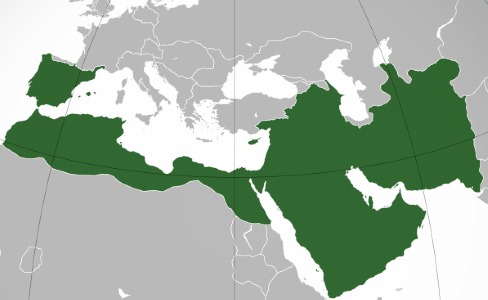
- advertisement -
- article continues below -
The succession of Muawiyah, the first Umayyad caliph, immediately led to civil war: the Second Fitna. Seeking to establish hereditary rule, Muawiyah had named his son Yazid as heir. This outraged Muhammad’s family. Although Hassan had earlier relinquished the caliphate, his brother Husayn now challenged Yazid’s legitimacy. The new caliph responded by killing Husayn, definitively splitting Islam into two forever: Shias maintained the claim of Muhammad’s family to power, whereas Sunnis accepted Yazid and the Umayyads as caliphs.
The Umayyad “dynasty” ultimately lasted for less than a century as opponents exploited ethnic discontent over the Arab bias of the fledgling bureaucracy. This led to a civil war that concluded with descendants of Muhammad’s uncle Abbas overthrowing the Ummayads and establishing the Abbasid Caliphate in 750. They moved the capital from Damascus to Baghdad, where the muslim world increasingly came under Persian cultural influence. The new capital became the global center of science, philosophy and invention during the Abbasids’ first century, known as the Golden Age of Islam. However, from the 9th century onward, political power fragmented as emancipated emirs took entire regions for themselves.
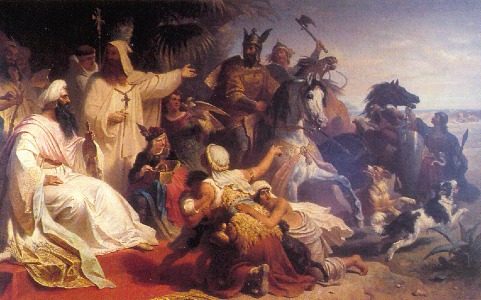
That’s why the Crusaders initially didn’t meet a united Islamic front when they traveled east. By then, the Islamic world had fractured into many semi-independent principalities. During the 10th century, the Abbasids even had to tolerate two rivaling caliphates. Some Umayyad descendants had managed to flee to al-Andalus (the Iberian peninsula) and set up a caliphate-in-exile in Córdoba. Another dynasty, tracing their ancestry to Muhammad’s daughter Fatima, established the Fatimid Caliphate in Egypt and North Africa.
During the 13th century, the Mongols descended upon Baghdad. They destroyed the city, killed the Abbasid caliph and terminated the caliphate. It would take over 250 years before the Ottomans reintroduced the title of caliph to the world.
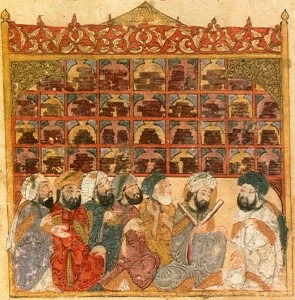
Disclosure: we work hard to provide you with exclusive medieval reports and guides. To make the Middle Ages accessible to everybody, we’d like this information to remain FREE. Therefore, some of the links below are affiliate links, meaning – at no additional cost to you – we will earn a small compensation if you click through.
Grab a short intro on another civilization from our Medieval Guidebook.